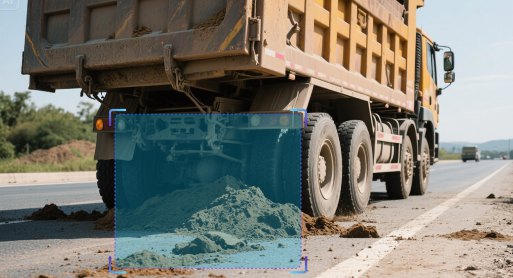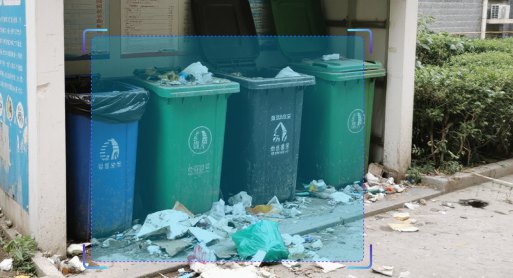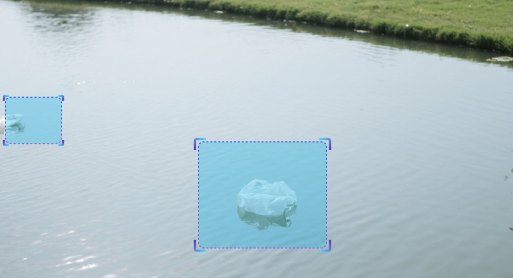
Improper Domestic Waste Disposal Detection

Algorithm Introduction
This AI-powered algorithm identifies whether individuals properly dispose of household waste into bins, automatically detecting and alerting on violations such as littering on the ground or improper disposal outside bins. It statistically tracks the number of violators and frequency of infractions. Designed for deployment in garbage rooms and community drop-off points, this solution serves as a critical supplement to urban intelligent waste sorting supervision systems.
- ● Lighting Conditions: Minimum 30% bright pixel ratio (grayscale value >40)
- ● Image Requirements:
- Minimum target size: 96(width)×324(height) pixels
- Violating individuals must occupy 5%-30% of frame width/height
- ● Installation Guidelines:
- Recommended camera height: 3-6 meters
- ● Maximum tilt angle: <30°
Application Value
-

Residential Waste Stations
Monitors compliance with waste sorting regulations by detecThe algorithm monitors whether residents properly disposes household waste in designated bins, issuing immediate alerts for violations such as improper disposal or littering, thereby supporting the standardized implementation of community waste sorting. -

Park Waste Bins
The algorithm detects instances of tourists littering in public green spaces, which assists in coordinating urban management enforcement and sanitation efforts in scenic areas. -

Transit Hubs & High-Traffic Areas
The algorithm monitors high-traffic areas such as bus stops and transportation hubs to prevent litter accumulation and ensure clean station environments and cityscape.
FAQ
-
Algorithm AccuracyAll algorithms published on the website claim accuracies above 90 %. However, real-world performance drops can occur for the following reasons:
(1) Poor imaging quality, such as
• Strong light, backlight, nighttime, rain, snow, or fog degrading image quality
• Low resolution, motion blur, lens contamination, compression artifacts, or sensor noise
• Targets being partially or fully occluded (common in object detection, tracking, and pose estimation)
(2) The website provides two broad classes of algorithms: general-purpose and long-tail (rare scenes, uncommon object categories, or insufficient training data). Long-tail algorithms typically exhibit weaker generalization.
(3) Accuracy is not guaranteed in boundary or extreme scenarios.
-
Deployment & InferenceWe offer multiple deployment formats—Models, Applets and SDKs.
Compatibility has been verified with more than ten domestic chip vendors, including Huawei Ascend, Iluvatar, and Denglin, ensuring full support for China-made CPUs, GPUs, and NPUs to meet high-grade IT innovation requirements.
For each hardware configuration, we select and deploy a high-accuracy model whose parameter count is optimally matched to the available compute power.
-
How to Customize an AlgorithmAll algorithms showcased on the website come with ready-to-use models and corresponding application examples. If you need further optimization or customization, choose one of the following paths:
(1) Standard Customization (highest accuracy, longer lead time)
Requirements discussion → collect valid data (≥1 000 images or ≥100 video clips from your scenario) → custom algorithm development & deployment → acceptance testing
(2) Rapid Implementation (Monolith:https://monolith.sensefoundry.cn/)
Monolith provides an intuitive, web-based interface that requires no deep AI expertise. In as little as 30 minutes you can upload data, leverage smart annotation, train, and deploy a high-performance vision model end-to-end—dramatically shortening the algorithm production cycle.






